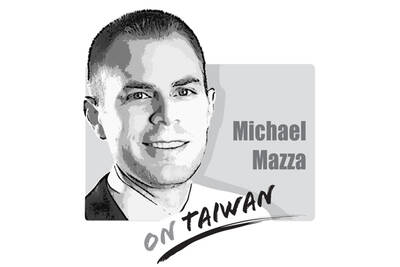Take a look at what is happening in global supply chains: Taiwan has received NT$1.13 trillion (US$39.08 billion) of investment pledges from companies to move parts of their production lines back home; India is emerging as the world’s second-largest smartphone manufacturer, as large companies such as Apple Inc move their operations there; and Japan plans to significantly ramp up a program encouraging businesses to build production sites in Southeast Asia to diversify supply chains out of China.
If there were any doubt about the effects of the US-China trade dispute and the COVID-19 pandemic on the landscape of global supply chains, the news that continues to come through should make it crystal clear: There is an increasing need to make supply chains more flexible and resilient in the post-COVID-19 world.
That is because there is growing awareness that supply chains have become weak and vulnerable to events beyond the control of those who manage or rely on them.
A report issued in August by global consultancy McKinsey & Co — Risk, resilience, and rebalancing in global value chains — indicated that under the threats of trade disputes, cyberattacks, pandemics and a number of climate-related events, companies in the next three to five years might move production of a quarter of global goods to new countries.
Based on McKinsey’s estimate of how much global trade could relocate, 16 to 26 percent of global exports, including pharmaceuticals, apparel, communication equipment and petroleum products — worth US$2.9 trillion to US$4.6 trillion in 2018 — could be in play.
The aforementioned risks often have severe repercussions on how businesses operate. For instance, McKinsey said that companies would need to strike a balance between their “just-in-time” lean production systems and a new “just-in-case” mindset of having sufficient backup inventory of key raw materials and safety stock of finished goods.
This could minimize the financial impact of disrupted supplies, as well as position companies to meet sudden spikes in demand, according to the report, which also suggested that companies deploy digital systems, analytics and cash management tools that could keep production going in the wake of any shocks.
For Taiwanese companies, suppliers in China have long been their major partners, but it appears that those in the home market are their most reliable partners for sourcing products. However, what happens when a shock strikes and they need to reroute production elsewhere?
Facing this uncertainty, Taiwanese companies should give more than a second glance at emerging markets, even though some of these nations have already been targeted by the New Southbound Policy launched by President Tsai Ing-wen (蔡英文) four years ago.
There are clear signs that India, Vietnam and several other Southeast Asian economies are eager to become part of global supply chains — and have invested more in infrastructure and education in the past few years.
In the past two decades, global multinationals have benefited from China’s cheap production costs, but the COVID-19 pandemic has exposed the shortcomings of their over-reliance on Chinese supply chains.
Most businesses are rethinking the importance of diversifying to a broader portfolio of suppliers, hoping that in a disaster, alternate sources can be secured quickly and cost-effectively.
For policymakers, reshaping Taiwan’s supply chain strategies must make flexibility and resilience the focal point, and they should strive to balance risk diversification and production efficiency.
The saga of Sarah Dzafce, the disgraced former Miss Finland, is far more significant than a mere beauty pageant controversy. It serves as a potent and painful contemporary lesson in global cultural ethics and the absolute necessity of racial respect. Her public career was instantly pulverized not by a lapse in judgement, but by a deliberate act of racial hostility, the flames of which swiftly encircled the globe. The offensive action was simple, yet profoundly provocative: a 15-second video in which Dzafce performed the infamous “slanted eyes” gesture — a crude, historically loaded caricature of East Asian features used in Western

Is a new foreign partner for Taiwan emerging in the Middle East? Last week, Taiwanese media reported that Deputy Minister of Foreign Affairs Francois Wu (吳志中) secretly visited Israel, a country with whom Taiwan has long shared unofficial relations but which has approached those relations cautiously. In the wake of China’s implicit but clear support for Hamas and Iran in the wake of the October 2023 assault on Israel, Jerusalem’s calculus may be changing. Both small countries facing literal existential threats, Israel and Taiwan have much to gain from closer ties. In his recent op-ed for the Washington Post, President William
A stabbing attack inside and near two busy Taipei MRT stations on Friday evening shocked the nation and made headlines in many foreign and local news media, as such indiscriminate attacks are rare in Taiwan. Four people died, including the 27-year-old suspect, and 11 people sustained injuries. At Taipei Main Station, the suspect threw smoke grenades near two exits and fatally stabbed one person who tried to stop him. He later made his way to Eslite Spectrum Nanxi department store near Zhongshan MRT Station, where he threw more smoke grenades and fatally stabbed a person on a scooter by the roadside.
Taiwan-India relations appear to have been put on the back burner this year, including on Taiwan’s side. Geopolitical pressures have compelled both countries to recalibrate their priorities, even as their core security challenges remain unchanged. However, what is striking is the visible decline in the attention India once received from Taiwan. The absence of the annual Diwali celebrations for the Indian community and the lack of a commemoration marking the 30-year anniversary of the representative offices, the India Taipei Association and the Taipei Economic and Cultural Center, speak volumes and raise serious questions about whether Taiwan still has a coherent India